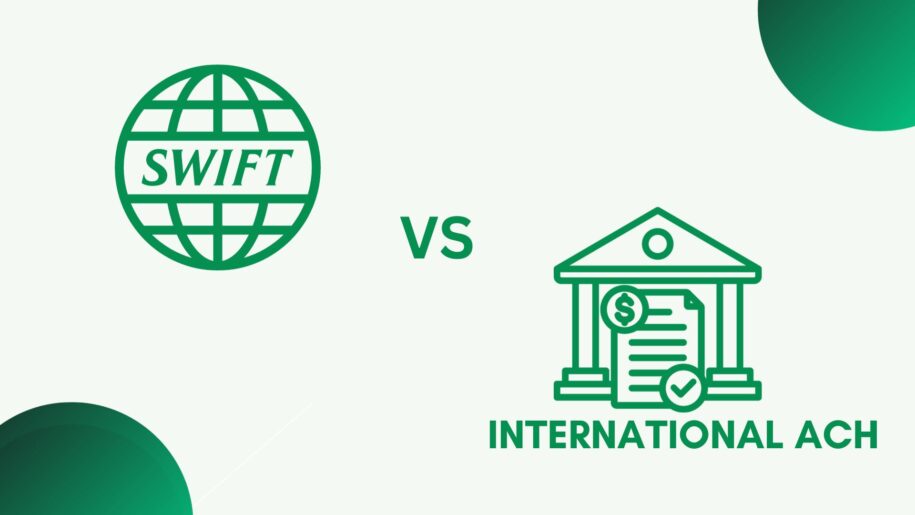Moving money across borders can be a complex and costly endeavor. The stakes are particularly high for agricultural commodities importers, who need to secure timely payments to producers, manage currency fluctuation while navigating tight margins. Choosing the right payment method, crucial for efficiency, cost, and success, comes down to two prominent options: Wire transfers and International ACH (also known as global ACH). While both can facilitate cross-border payments, their suitability depends on factors such as speed, cost, and currency support, which agricultural commodity importers should carefully assess before selecting one.
Wire Transfers: Speed and Security, at a Cost
Traditionally, wire transfers have been the go-to option for international payments. They offer the benefit of speed, with funds typically reaching the recipient within the same day or the next business day. Additionally, they are considered highly secure due to their real-time processing and limited intermediaries. However, these advantages come with a hefty price tag. Wire transfers can incur significant fees, ranging from $25 to $50 per transaction, depending on the amount and sending/receiving banks. Furthermore, wire transfers are often subject to cut-off times for same-day processing, adding another layer of complexity.
International ACH: A Cost-Effective and Convenient Alternative
Emerging as a viable alternative, international ACH offers a more cost-effective and user-friendly approach to cross-border payments. Leveraging existing domestic ACH networks in different countries, international ACH facilitates faster and more efficient settlements compared to traditional wire transfers. The fees associated with international ACH are significantly lower, typically ranging from $5 to $10 per transaction. Additionally, international ACH boasts broader accessibility, with settlements often reaching recipients within 1-3 business days. However, it’s important to note that international ACH may not be available in all countries and may have limitations on the transfer amount.
Picking the Right Path: Consider Your Priorities
So, which method should you choose? Here’s a quick breakdown to guide your decision:
Urgency: Need cash in a flash? Wire transfers win for speed. Can you wait a few days? International ACH is the more cost-effective option.
Cost: Budget is tight? International ACH keeps your wallet happy. Speed trumps cost for you? Wire transfers might be worth the splurge.
Transaction size: Sending smaller amounts? International ACH shines. Moving high-value sums? Wire transfers might be necessary.

AGnimble: Simplifying Cross-Border Payment for Agricultural Commodities
For agricultural commodities importers, navigating the intricacies of international trade goes beyond just choosing the right payment method. AGnimble offers a comprehensive cross-border payment solution specifically designed to simplify your operations and optimize your costs. With AGnimble, you can:
Pay producers in over 175 countries: Reach a wider range of suppliers and secure the best deals.
Save up to 20% on transaction fees: Reduce your financial burden and improve your bottom line.
Eliminate delays: Enjoy faster and more efficient settlements, ensuring timely deliveries.
Simplify operations: Utilize a modern B2B procurement platform for streamlined trade management.
While both Wire and International ACH have their place in the cross-border payment landscape, agricultural commodities importers deserve a solution tailored to their specific needs. AGnimble provides the perfect blend of affordability, efficiency, and global reach, empowering importers to navigate the complexities of cross-border trade with confidence and ease.
With AGnimble, you can focus on what you do best – building strong relationships with producers, sourcing high-quality agricultural commodities, while leaving the complexities of cross-border payments to us.
Embrace transparency, efficiency, and cost-savings – Learn More
- How to Buy Affordable Green Coffee Without Compromising Quality - February 5, 2025
- Grounds for Change Rethinking the Coffee Supply Chain - January 9, 2025
- Why Data is the New Gold for Coffee Producers - July 30, 2024
